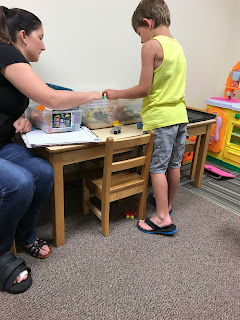WANDERING/ELOPEMENT
Elopement is when a person leaves an area without permission or notification, which can put the person in a potentially dangerous situation. When I think of a child with ASD wandering away, I think of a child who bolts from a noisy classroom, a hectic home, or just wanders away to follow a frog they have been watching hop around. But in all reality, a child could elope or wander from a safe, quiet home just as much.
In 2012 a study stated the top 5 reasons children with ASD wander:
- Enjoys exploring (54%)
- Heads for a favorite place (36%)
- Escapes demands/anxieties (31%)
- Pursues a special topic (31%)
- Escapes sensory discomfort (27%)
More than 1/3 of children who wander or elope are never or are rarely able to communicate their name, address, and phone number.
49% of children with ASD attempt to elope from a safe environment and children with ASD are 8 times more likely to wander between the ages of 7 and 10 than their typically developing peers.
Those statistics are frightening! That is why Autism parents are so vigilant all of the time. They have to be on their game 24/7. You have your back turned for 30 seconds and your child could be gone. It's so nerve-wracking!!!!!
I remember a time where a friend had told me to sit down and relax. They have no idea what it's like to have to worry constantly about your child. Even when you think you're in a safe environment your child can still wander off. This fear is why a lot of Autism parents have depression, anxiety, and PTSD. But that will be a different post.
There are a lot of tips for keeping your ASD child safe:
- Swim lessons
- GPS tracking devices like AngelSense
- Medical ID bracelet
- Having locks high up on the doors
- Having an alarm for if the door is opened
- Blocking bodies of water off
- Alerting neighbors and first responders about your child
I remember when Jaxon was maybe 4 or so, he was obsessed with license plates. We went to a birthday party and all he did the whole time was walk up and down and look at all of the license plates. It was fun for him, but very isolating for me. Anyways, that was the same time where he really didn't have a sense of danger. If we were outside and a car was coming you would have to stand by Jaxon just to make sure he didn't run into the road. He loved cars so much. In parking lots, my grip would be super tight because it's an ocean of cars and he was in heaven. He didn't care if he walked in front of a moving vehicle or not.
Now that Jaxon is older, he has grasped the fact that things can be dangerous. But that's not saying that if something really interests him, he wouldn't try to elope to look at it. It doesn't matter how old our kids with ASD get, we will always stress and worry about their safety.
 |
| He always had to look at my license plate when we were outside. |











